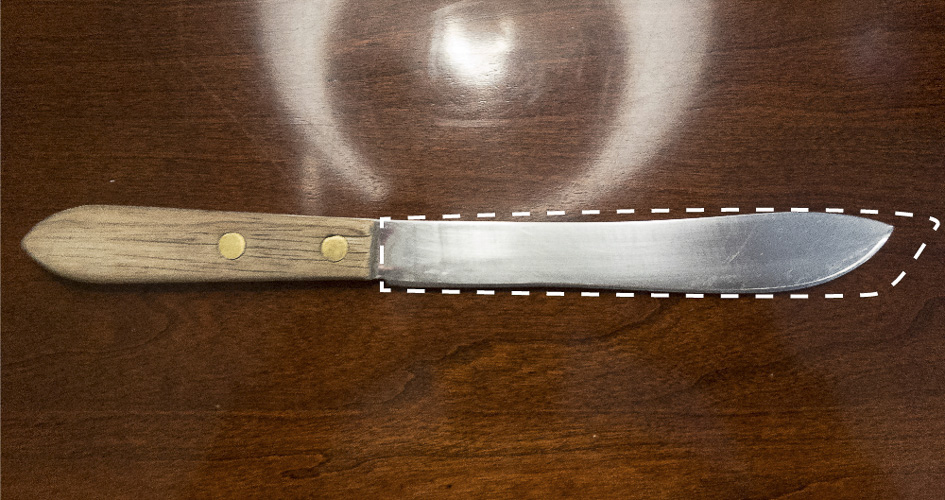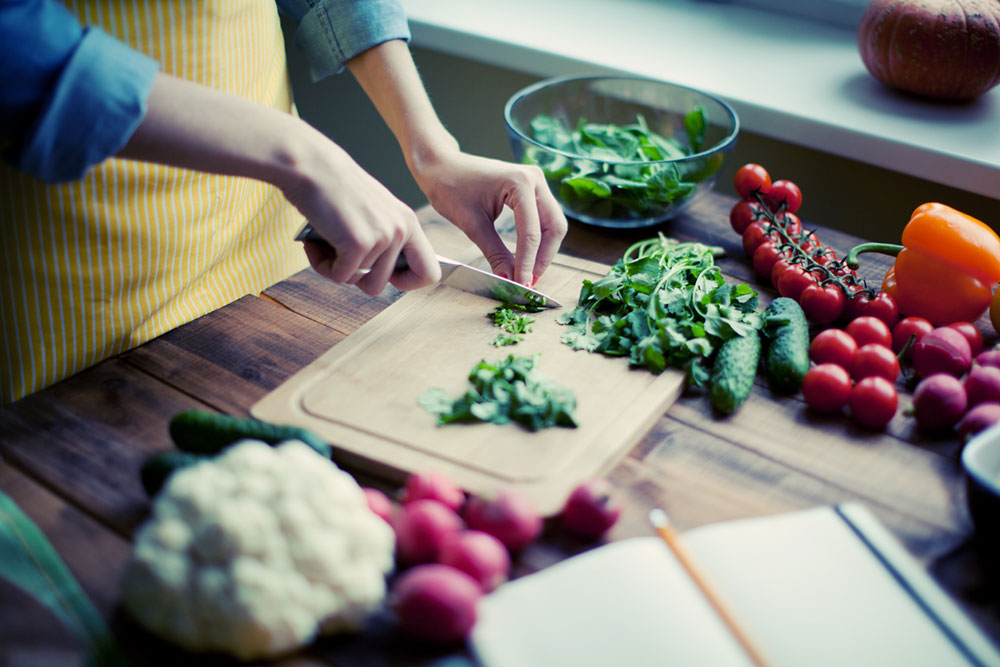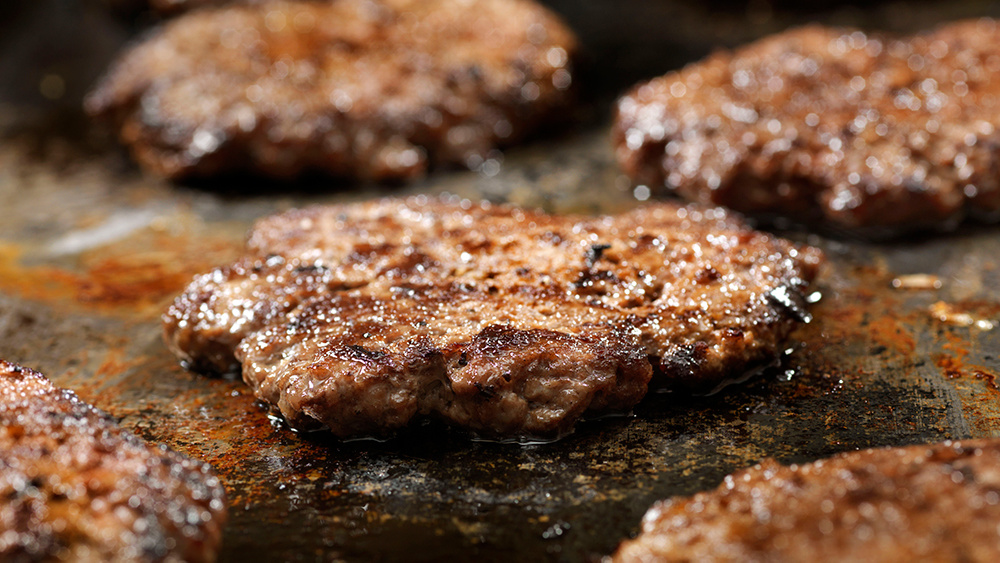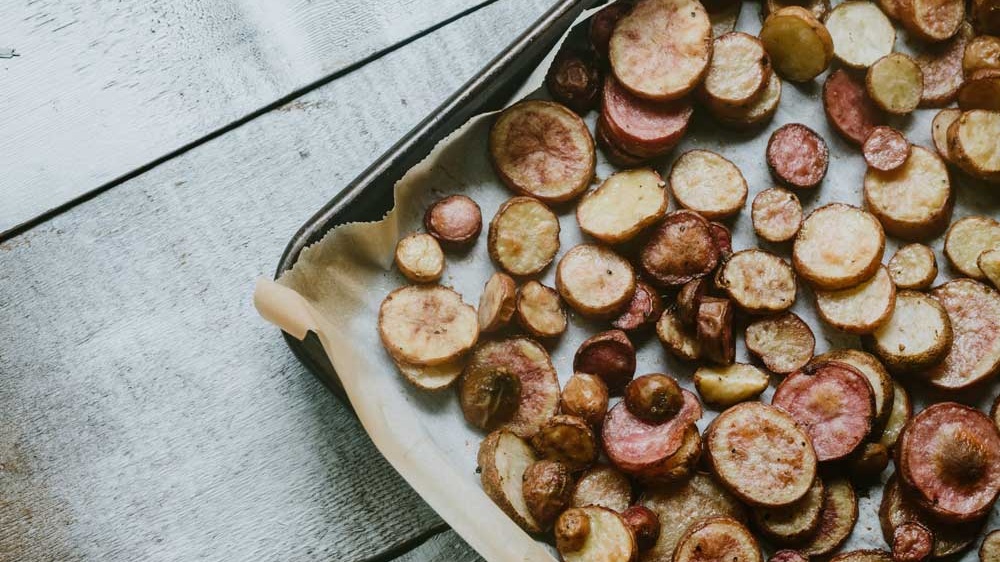A Sharp Knife Can Save a Finger

 Add to favorites
Add to favorites
My father was an engineer; a smart and precise man who had his weekend rituals. About once a month, I’d find my father at the kitchen table on a weekend afternoon sharpening the kitchen knives.
He’d have a sharpening stone in front of him set on a spread of newspaper print. He had a little can of oil that looked like a miniature version of the oil can used to loosen up the Tin Man in the Wizard of Oz, and he’d have an assortment of knives. From paring knife to carving knife, he’d sharpen them all. It took him probably an hour to do six knives.
He’d squirt a strip of oil across the stone. He’d spread that oil out in a thin layer and begin methodically sweeping the blade of the knife along the stone. Back and forth. Back and forth. Top tip to bottom edge where the blade meets the handle. That motion would sharpen both sides of the blade. The idea was to keep the knife at the perfect angle so the edge got sharpened without scraping away too much of the blade. My father was a whiz at it. A regular wizard of knives.
When I asked him why he sharpened the knives so often he came back with an answer. He told me, “A sharp knife is a safe knife.”
That seemed counter-intuitive. Sharp knives cut more easily than dull knives. Right? Sharp knives seem dangerous.
Not really.
A sharp knife is much safer. Most kitchen accidents happen in restaurants (where knife-wielding is a constant activity) with a dull knife. The extra exertion it takes to cut through a piece of food with a dull blade is what causes accidents. The force might cause the food to move and the blade comes down harder than expected, jumping off course. If your finger is in the way… OUCH. Blood’s next.
You see it in the cooking shows. Some guy is nervous. He has an accident with his knife and ends up with a medic patching him up and then he has to wear an awkward kitchen glove that slows him down in his prep. That usually means disqualification.
In the home kitchen, it might mean a trip to the emergency room.
How do I decide when it’s time to sharpen my knives? It’s when my knife doesn’t immediately flow through the skin of a tomato.
That seems counter-intuitive too. A tomato? The tomato skin is quite thin. A piece of meat is much denser. So why would you not decide to sharpen a knife when it gets more difficult to cut the meat?
The answer lies in the tomato. Tomatoes are round. When you are slicing a tomato it’s easy to have the blade slide off the side if it doesn’t smoothly move through the skin with ease. It’s easier to cut yourself slicing a tomato than just about anything else. And when you dice tomatoes, if the little bits are not being cut cleanly as you go, the tendency is to hack at them. More opportunity for an accident.
My father taught me how to sharpen knives on his stone when I was old enough to take the care needed and the dexterity to get the angle right on the blade. He was a good instructor.
As I grew older and started working in restaurants, I was taught how to sharpen knives with what they call a steel. That’s a long cylinder that you hold in one hand while you stroke the knife across it with your other hand. Chefs who are good at it make it look like knife ballet. Most restaurants with line cooks don’t leave the knife sharpening to the cooks. They use a knife exchange program. Newly sharpened knives are delivered to the restaurant once a week and the dull ones are shipped off to be sharpened and exchanged again the next week. I’ve worked in places like that too. It’s a pretty sharp idea.
In my kitchen as a young adult, I was more interested in cooking for dinner parties than taking the time to sharpen knives, so I bought an electric knife sharpener. That thing never quite did the job.
My preference now is to take my knives to a professional knife sharpening shop. The task is so inexpensive to have done it’s worth it. Trouble is when I moved to Chattanooga 4 years ago I could not find a shop that sharpened knives!
That problem has just been solved! I found a new place that is part gift shop/cooking store and they sharpen knives! The owner’s son is a knife sharpening expert and is taking care of all the chefs in town who need their knives sharpened and now, me too! Yahoo!
When my father passed away I inherited his favorite knife. It’s big enough for big carving jobs; more than a paring knife. I don’t use it often. I keep it more for the sentimental reasons than for action in my kitchen. I’ve had it sharpened a couple of times, but not many. When you look at the knife you can see it’s been sharpened hundreds, if not thousands, of times. The blade has worn down as a result of all of the sharpening. (I tried to illustrate in the picture how the blade might have looked when it was new).

I never asked my father how he came to be in possession of that knife. For all, I know it had been my grandparents’ knife or even their parents. That knife has seen a lot of time in a kitchen and a lot of time sweeping across the sharpening stone. Now, it’s in knife retirement.
Cheers,

Nothing found.
Smash Burgers
ZS-5 Ingredients or Less,ZReboot,Featured Posts,ZSpecialties,Recipes
Smash burgers are all the rage. Step into a brew pub and you’ll likely find a smash burger on the food menu. These are NOT the huge, 8oz burgers we’ve been fed in the past. These are a thinner burger…
Nothing found.
Chives
My chives were the first thing to come up in my herb garden every year. As soon as the snow melted I could see their little heads popping up through the soil. By the time it was warm enough to…
Potatoes and the Glycemic Index
Featured Posts,Zola Blog,Carbohydrates
Enjoy potatoes in moderation and use these hints to make healthier choices.
1 Comment
Add comment Cancel reply
You must be logged in to post a comment.






Interesting.